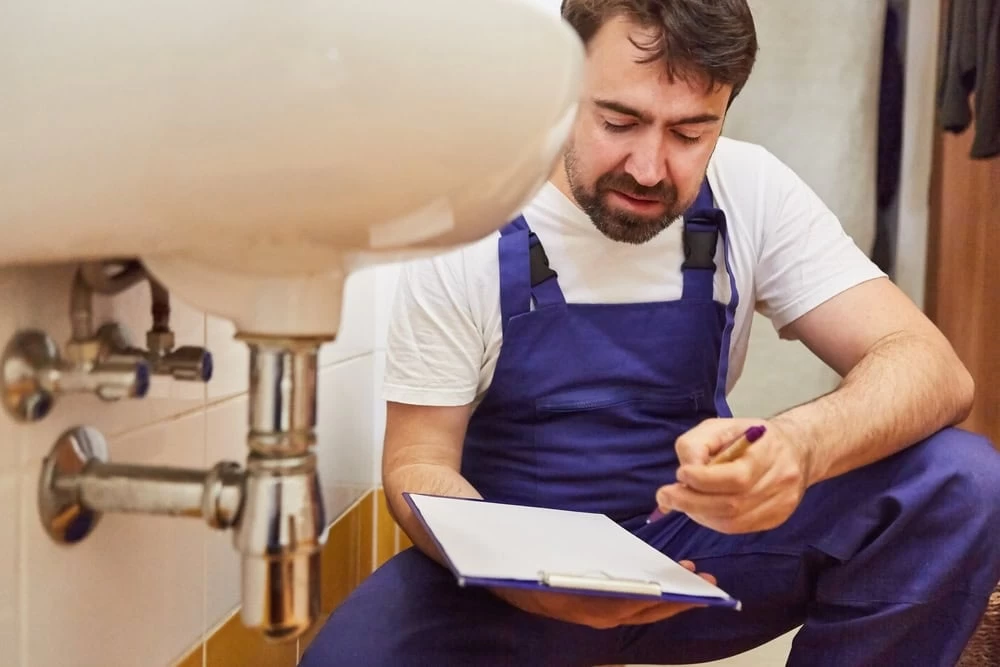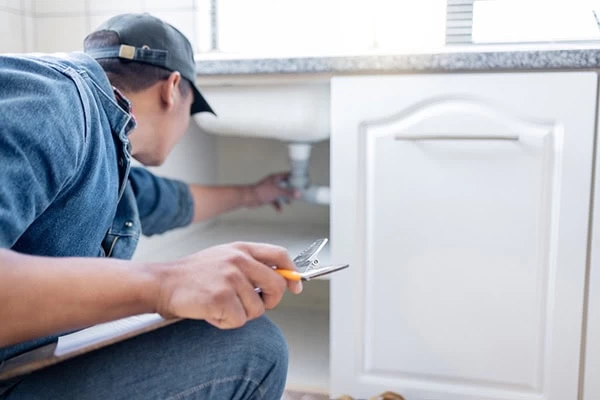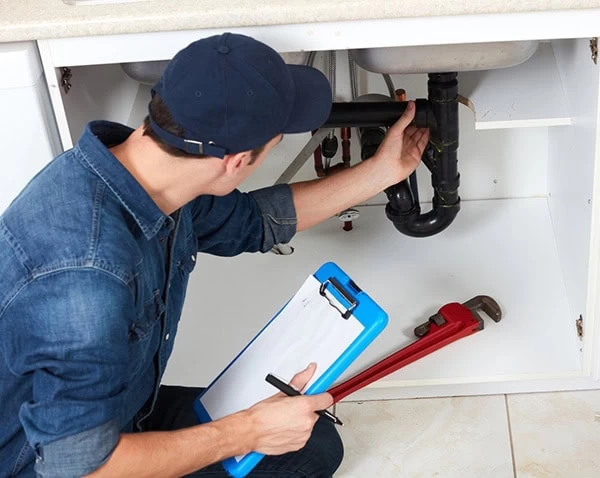Discover the right plumbing inspection schedule to avoid expensive emergencies and keep your system running smoothly year-round.
Share:

Summary:
Most plumbing systems need professional inspection once a year. This isn’t arbitrary – it’s based on how quickly issues typically develop and when catching them early makes the biggest difference.
Annual inspections work well for newer homes with standard usage. We can spot developing problems, check system efficiency, and handle minor maintenance before small issues become expensive headaches. Think of it like your car’s annual service – regular attention keeps everything running better for longer.

A thorough plumbing inspection covers your entire system, not just the obvious parts. We check all visible pipes for leaks, corrosion, or damage. We’ll test water pressure throughout the house and examine fixtures for proper operation and potential wear.
The inspection includes your water heater – checking for efficiency, safety, and signs of impending failure. We also evaluate your main water line, sewer connections, and drainage systems. In areas like Sacramento and El Dorado Counties, we pay special attention to mineral buildup from hard water, which can restrict flow and damage fixtures over time.
Don’t forget about what you can’t see. We use specialized tools to check inside pipes, identify hidden leaks, and assess the condition of underground lines. We’ll also examine your home’s water pressure regulation and backflow prevention systems to ensure everything meets current codes and safety standards.
Some homes need attention more than once a year. If your house is over 20 years old, consider inspections every six months. Older plumbing systems develop problems faster, and early detection becomes even more critical as components age.
High usage also changes the timeline. Large families, home businesses, or frequent entertaining put extra stress on your plumbing system. More usage means more wear, more potential for clogs, and faster deterioration of moving parts like faucet valves and toilet mechanisms.
Your local water conditions matter too. Hard water areas like parts of Placer and Amador Counties can cause mineral buildup that restricts flow and damages fixtures. If you’ve noticed white deposits on faucets or reduced water pressure, you might need more frequent professional attention to keep everything flowing properly.
Previous problems are also a red flag. If you’ve had recurring issues, emergency repairs, or major plumbing work, stay on top of things with more frequent inspections. Your system might be telling you it needs extra attention.
Want live answers?
Connect with a CG Plumbing expert for fast, friendly support.
Here’s the reality: emergency plumber calls cost significantly more than scheduled maintenance. Emergency rates, urgent parts ordering, and potential water damage add up fast. Plus, plumbing problems don’t wait for convenient timing.
Preventive maintenance flips this equation. Regular inspections catch issues when they’re still small and manageable. We can schedule repairs during normal business hours, order parts in advance, and fix problems before they disrupt your life or damage your home.

Routine inspections regularly uncover problems homeowners didn’t know existed. Small leaks are probably the most common discovery – they often start in hidden areas like behind walls or under slabs, where you won’t notice them until damage is extensive.
Water heater issues come up frequently too. Sediment buildup, failing heating elements, and corroded tanks often show warning signs long before complete failure. Catching these early means planned replacement instead of emergency installation when you’re suddenly without hot water.
Drain problems are another regular find. Slow drainage, partial clogs, and tree root intrusion typically develop gradually. Most homeowners adapt to slightly slower drains without realizing there’s a growing problem. Professional inspection identifies these issues before they become complete blockages requiring emergency drain cleaning.
Fixture problems also surface during inspections. Toilet seals, faucet valves, and supply line connections wear out over time. We can spot components that are approaching failure and replace them during scheduled maintenance rather than emergency service calls.
Northern California’s climate creates specific maintenance needs for homes in Sacramento, El Dorado, Placer, and Amador Counties. Temperature swings cause pipes to expand and contract, potentially loosening connections and creating stress points that develop into leaks.
Winter freeze protection becomes important, especially in higher elevation areas of El Dorado and Amador Counties. Even though freezing isn’t common, when it happens, unprepared plumbing systems can suffer serious damage. Fall inspections should include freeze protection evaluation and recommendations.
Summer brings different challenges. Higher water usage for landscaping and pools puts extra demand on your system. Hot weather can also accelerate certain types of pipe deterioration and increase pressure on your water heater. Spring inspections help ensure your system is ready for summer demands.
Seasonal inspections also align well with other home maintenance tasks. Many homeowners find it easier to schedule plumbing inspection alongside HVAC service or other annual maintenance, creating a comprehensive approach to home care.
Your plumbing system is a significant part of your home’s infrastructure and value. Regular inspections protect this investment by preventing major damage and ensuring everything operates efficiently. Most plumbing problems cost much less to fix when caught early.
The peace of mind factor is worth considering too. Knowing your system has been professionally evaluated and maintained means fewer middle-of-the-night emergencies and unexpected repair bills. When you do need service, you’re working with us – we already know your system.
If you’re ready to establish a maintenance schedule that makes sense for your home, we can help you determine the right inspection frequency based on your specific situation and local conditions.
Article details:
Share: